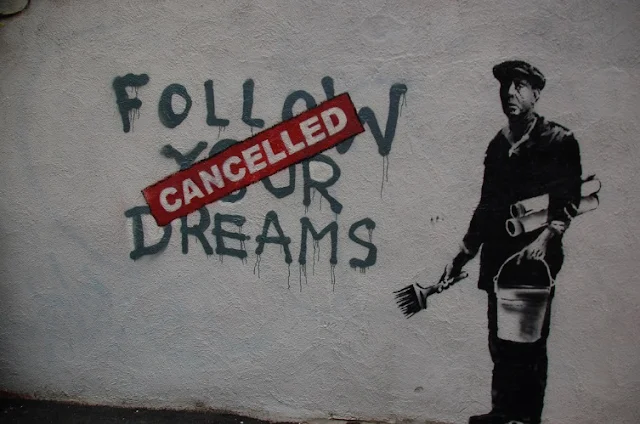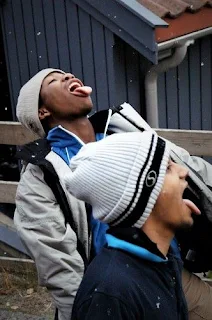Snowy July in Lesotho
Lesotho is the snowiest country in Africa, experiencing its highest snowfall during the colder month of July. Six African countries, Tunisia, South Africa, Lesotho, Morocco, and Algeria, experience snowfall.
Lesotho relies heavily on snowfall for its water supply. The snow in the mountains acts as a natural reservoir, storing water that gradually melts and feeds into rivers and streams. This meltwater is essential for the region's drinking water, agriculture, and hydroelectric power generation. Snowmelt also replenishes rivers and lakes, supporting biodiversity and maintaining ecological systems.
Lesotho's mountainous regions exhibit microclimates, where localized weather conditions differ from the surrounding areas. Factors such as elevation, direction faced by a slope, and topography contribute to these microclimates, resulting in variations in temperature, precipitation, snow, and wind patterns.
In Lesotho's mountainous regions, the type of snow can vary depending on the elevation and temperature conditions at the time of snowfall. Higher elevations are more likely to experience colder temperatures, which can result in drier, powdery snow. However, during milder winter conditions, wetter and heavier snow may occur, especially at lower elevations.
Misconception: Africa's heat and dryness make people think it doesn't snow.
However, Africa is a vast continent with diverse climates, and some parts of it experience snowfall during the colder months. Furthermore, the popular misconception that Africa is always hot and dry can be attributed to a lack of knowledge about the continent's geography and climate and limited media coverage of its winter weather conditions.
Additionally, some people may associate Africa with images of wildlife, savannas, and tropical beaches, which are not typically associated with snow and winter weather. However, six African countries, such as Tunisia, South Africa, Lesotho, Morocco, Namibia, and Algeria, experience snowfall in the winter months due to their higher elevations or proximity to mountain ranges.
Therefore, it is important to recognize that Africa is a diverse continent with a range of climates, and snowfall is not uncommon in some areas during the colder months. Below is a table of African countries with snowfall, coldest month, highest snowfall amount, and coldest temperature on record.
Lesotho is the snowiest country in Africa. Six African countries, Tunisia, South Africa, Lesotho, Morocco, and Algeria, experience snowfall.
| Country | Coldest Month | Highest Snowfall | Coldest Temp. (°F) |
|---|---|---|---|
| South Africa | June | 8.5 inches | 30°F |
| Lesotho | July | 216 inches | 14°F |
| Morocco | January | 12 inches | 27°F |
| Algeria | January | 46 inches | 27°F |
| Tunisia | January | 6 inches | 35°F |
| Namibia | July | Rarely snows | 20°F |
South Africa Snow.
A few areas in South Africa, such as the Drakensberg mountain range in KwaZulu-Natal and the Eastern Cape region, are the most likely places to experience snow in South Africa.
In the Drakensberg Mountains, snow is a fairly common occurrence, especially in the higher elevations. The mountains offer breathtaking views of snow-capped peaks and are a popular destination for winter sports enthusiasts. Skiing, snowboarding, and snowshoeing are popular activities when it snows, and several ski resorts and lodges offer winter packages and amenities.
In the Eastern Cape region, the town of Rhodes is known for its frequent snowfall during the winter months. The town is located in the southern Drakensberg Mountains and is a popular destination for snow enthusiasts. Snowball fights, building snowmen, and sledding are popular activities when it snows.
Lesotho Snow.
Lesotho is a small, mountainous country in southern Africa that experiences snowfall between May and September. In addition to skiing, snowball fights, snowshoeing, and building snowmen, people in Lesotho also enjoy sledding and tobogganing down the mountainsides. It's a fun and exhilarating way to experience the snow and take in the stunning views of the Maluti Mountains.
Snow in Lesotho attracts tourists and winter sports enthusiasts. The country's ski resorts, such as Afriski Mountain Resort, benefit from the presence of snow. Skiing, snowboarding, and other winter activities contribute to the tourism industry and provide economic opportunities.
Lesotho depends on snowfall as a vital water source. Mountain snow acts as a natural reservoir, slowly melting and supplying rivers and streams. This meltwater is crucial for drinking water, agriculture, and hydroelectricity. Additionally, it sustains ecosystems and biodiversity by replenishing rivers and lakes.
 |
| Malealea village in Lesotho gets a lot of snow. |
Morocco Snow.
The Atlas Mountains in Morocco receive snowfall during the winter months, usually between December and March. One popular activity when it snows is skiing, with several ski resorts located in the mountains. However, snowboarding, snowshoeing, and snowmobiling are also popular activities. For those looking for a more laid-back experience, sipping hot mint tea or enjoying a traditional Moroccan meal in a cozy mountain lodge is a great way to take in the winter wonderland.
Algeria Snow.
The Atlas Mountains in Algeria also receive snowfall during winter, with the heaviest snowfall occurring in January and February. Skiing and snowboarding are popular activities, with several ski resorts located in the mountains. Snowshoeing, sledding, and snowmobiling are also popular, and for those who want to take in the snow-covered landscapes, hiking and trekking through the mountains is a great options.
Tunisia Snow.
The Djebel Dorsale mountain range in Tunisia experiences snowfall during the winter months, usually between December and February. Skiing and snowboarding are popular activities, with several ski resorts located in the mountains. For those who prefer a more laid-back experience, visiting the historic city of Tunis and enjoying the local cuisine and culture is a great option.
Namibia Sleet.
In Namibia there have been some instances of sleet, which is a mixture of rain and snow, occurring in certain areas of Namibia during particularly cold winters. For example, in June 2018, sleet was reported in the Otjihavera Mountains in central Namibia. While this was a rare and unusual event, it does demonstrate that under very specific weather conditions, Namibia can experience some form of wintry precipitation.
Different types of snow in Lesotho's mountainous regions.
Dry snow is characterized by light, powdery flakes that do not clump together easily. It typically occurs in very cold temperatures when the moisture content in the air is low. Dry snow is often associated with colder, drier climates and can create fluffy snowdrifts.
Wet snow, also known as packing snow, is heavier and denser than dry snow. It occurs in milder temperatures closer to the freezing point. Wet snowflakes contain more moisture and can stick together, making it easier to pack into snowballs or build snowmen. Wet snow is often associated with regions where the air is more humid.
Slush is a mixture of partially melted snow and water. It occurs when snow starts to melt due to rising temperatures or rain. Slush is characterized by its wet, slushy consistency and is often found on the ground when snow begins to melt or in areas where the snow has been compacted or churned up.
Ice pellets, also known as sleet, are small, translucent ice particles. They form when snowflakes partially melt as they fall through a layer of above-freezing air and then refreeze before reaching the ground. Sleet usually bounces or bounces off surfaces and can accumulate like snow.
Did you know? Due to its high elevation, Lesotho receives snowfall during the winter months, particularly in the mountainous regions. Snowfall is more common in the highlands and can impact various aspects of life, including water supply, tourism, and agriculture.
- That African Fabric You're Wearing Isn’t African

- About neck elongation rings

-
Lighthouses of Egypt and Morocco

- Mental Illness in Africa Taboos

-
Kente cloth inspired by a spiders web




























